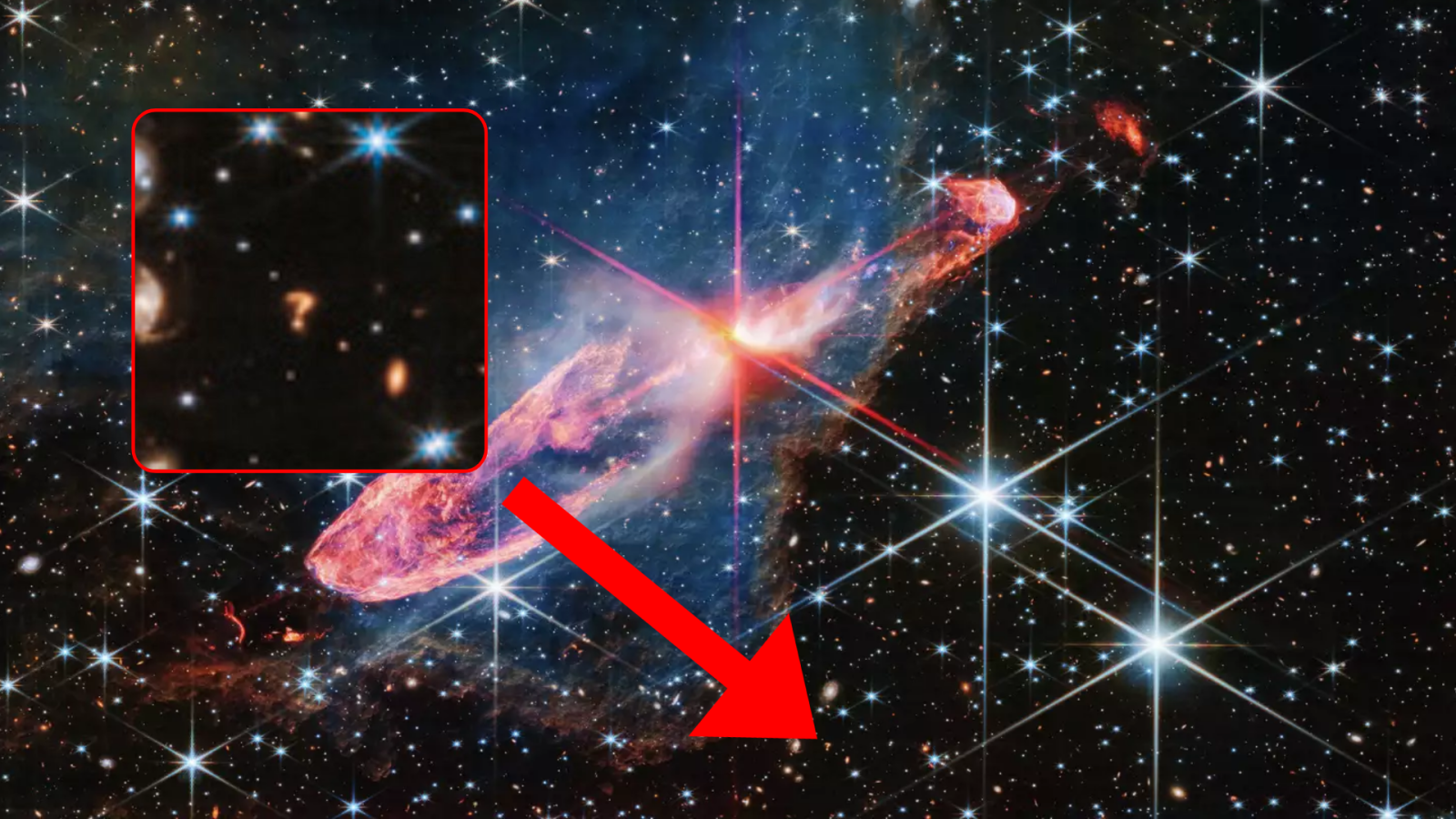
An image of a cosmic question mark is making its rounds on social media. It appears to have originated from a new observation by NASA’s James Webb Space Telescope. And no, it’s not aliens asking how we’re doing.
So, what could it be? Read on..
Using the James Webb Space Telescope (JWST), a team from the European Space Agency (ESA) released an image on Wednesday (June 26) showing a detailed look at two actively forming young stars located in the Vela Constellation, about 1,470 light-years away from Earth.
Deep in the background and just below the subject of a tightly bound pair of actively forming stars, known as Herbig-Haro 46/47, lies the cosmic mystery that has astronomers and the general public yarning for more information.
Join our Discord Server: Join the community with forums and chatrooms about space!

What could the ‘question mark’ be?
What exactly the object resembling a question mark is remains uncertain, but its color and form provide us with some insight.
According to the Space Telescope Science Institute (STScI) in Baltimore, which is responsible for JWST’s operations, the most likely explanation is that it represents a remote galaxy or possibly a pair of galaxies tangling in each other’s gravitational pull, resulting in the distorted configuration resembling a question mark.
Some researchers have also pointed out that the color of the question mark object is similar to other distant galaxies in the same image. Assuming that the mysterious object could be a galaxy or a pair of galaxies seems like the most plausible method for identification at the moment.
More stunning images of the mysterious object and other galaxies from the James Webb Space Telescope are sure to come, thanks to its ability to see light from over 13 billion light-years away and peer through cosmic dust clouds using infrared.
Just last week, a new image of the famous Ring Nebula from the JWST was released, showing detail never seen before.
Looking for a decent telescope to do your own sky-watching? I’d highly recommend looking at these Celestron telescope options.
FTC: We use income earning auto affiliate links. More.





Comments